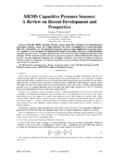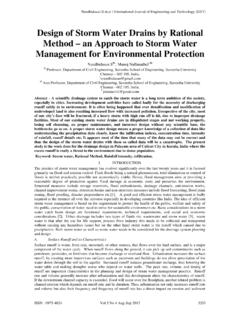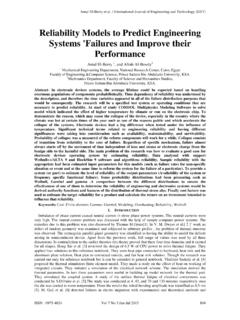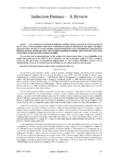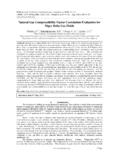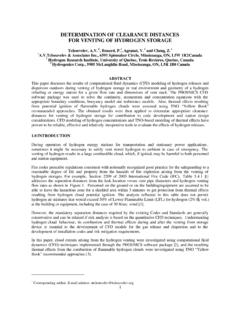Transcription of Modelling of Boil-Off Gas in LNG Tanks: A Case Study
1 E. Adom et al. / International Journal of Engineering and Technology (4), 2010, 292-296 Modelling of Boil-Off Gas in LNG Tanks: A Case Study Ebenezer Adom, Sheikh Zahidul Islam and Xianda Ji School Engineering, Robert Gordon University, Aberdeen, United Kingdom E-mail of corresponding author: Abstract This paper focuses on the effect of pressure and heat leakages on Boil-Off Gas (BOG) in Liquefied Natural Gas (LNG) tanks. The Lee-Kesler-Plocker (LKP) and the Starling modified Benedict-Webb-Rubin (BWRS) empirical models were used to simulate the compressibility factor, enthalpy and hence heat leakage at various pressures to determine the factors that affect the BOG in typical LNG tanks of different capacities. Using a case Study data the heat leakage of 140,000kl, 160,00kl, 180,000kl and 200,000kl LNG tanks were analyzed using the LKP and BWRS models.
2 The heat leakage of LNG tanks depends on the structure of tanks, and the small tanks lose heat to the environment due to their large surface area to volume ratio. As the operation pressure was dropped to 200mbar, all four of the LNG tanks BOG levels reached In order to satisfy the BOG design requirement, the operating pressure of the four large LNG tanks in the case Study was maintained above 200mbar. Thus, the operating pressure impacts BOG on LNG tanks, but this effect is limited under the extreme high operation pressure. An attempt was made to determine the relationship between the compositions of LNG and BOG; one been combustible and the other non-combustible gases. The main component of combustible gas was methane, and nitrogen was of non-combustible gases.
3 The relationship between BOG and methane compositions was that, as the methane fraction increases in the LNG, the BOG volume also increases. In general, results showed a direct correlation between BOG and operating pressure. The Study also found that larger LNG tanks have less BOG; however as the operation pressure is increased the differences in the quantity of BOG among the four tanks decreased. Keywords: Boil-Off Gas (BOG), Liquefied Natural Gas (LNG), Lee-Kesler-Plocker (LKP) and Starling modified Benedict-Webb-Rubin (BWRS) model. 1. INTRODUCTION Natural gas is favored, in many countries, over other fuels such as coal because of its relatively high quality and cleaner burning character which thus reduces pollution to the environment.
4 Liquefied natural gas (LNG) is a better form for the long distance transportation and storage of natural gas. LNG is produced by cooling natural gas with liquid nitrogen to -160oC under the normal pressure. The resultant volume of the LNG will be 1/600 that of the original natural gas. Thus, LNG is the format for natural gas transportation and storage. The LNG industry and trade increased rapidly in recent years. The common characteristic of LNG Storage tanks is the ability to store LNG at the very low temperature of -160oC. LNG storage tanks have double containers, where the inner contains LNG and the outer container contains insulation materials. [1, 2] Boil-Off Gas (BOG) is the vapour phase in the LNG tanks. As the increase in BOG will leads to an increase in the pressure of the LNG tank as the volume of the gas form is much greater than the liquid form, BOG can be a big problem for LNG tanks storage.
5 In this Study , the heat leakage of LNG tanks would be investigated, because it is the main reason for BOG of LNG tanks. As the heat leakage is determined by the structure of the tanks, the different types of LNG tank should be learned, firstly. Some parameters also can impact BOG quantity, such as operating pressure, and compositions of LNG. Thus, the thermodynamics character of LNG needed to analysis, it is necessary to choose a suitable model to apply, and to process available computer programs, in order to compute these models. The results of each model are discussed and the general character of BOG would be obtained; thus, some useful suggestions could be given for the use of LNG tanks.
6 2. LNG MODELS There are many kinds of model available for LNG Modelling , which range from the simplest Gaussian model, through simplified density gas models to computational fluid dynamic codes [3]. The Gaussian model assumes dispersion is dominated by atmospheric turbulence and ignores dense gas effects thus is not considered appropriate for gas density equation. There are several current uses of CFD codes for LNG [4], as CFD directly uses the fundamental equations of fluid flow. Also local geographic feature can be included in CFD by working with a customized grid and boundary conditions. However, the disadvantage of CFD is that there are many additional modeling issues which should be addressed.
7 Thus, CFD code has not been a routine model for LNG. Equations of state (EOS) are commonly used to analyze the vapor-liquid phases of multi-component fluid mixtures. The Lee-Kesler-Plocker (LKP) equation draws upon the relationship of PVT (Pressure, Volume, and Temperature). It was first proposed for in use for thermodynamic properties by Ploker [5]. The LKP equation is an accurate general method for non-polar substances and mixtures, which can be used in the ISSN : 0975-4024292E. Adom et al. / International Journal of Engineering and Technology (4), 2010, 292-296 calculation of density and enthalpy. In order to calculate the BOG of LNG, the density, and enthalpy are the key parameters, and virial equations are just theoretical expressions, they are developed by LKP model and BWRS model; thus, LKP and BWRS model are suitable methods to compute BOG of LNG.
8 Furthermore, the two models are convenient for computer programming. LKP models are used for calculating the compressibility factor and deriving thermodynamic properties of normal fluids and modified LKP equations for calculation of polar fluids. An acentric factor as the fourth parameter was added to calculate vapor-phase data for each fluid. The accuracy of some equations of state for the prediction of molar volume for different hydrocarbons were reviewed by Ye et al. [6] and Solimando et al. [7], recently. Ye used the corresponding states LKP model, Peng-Robinson model, and Simonet-Behar-Rauzy equation. He concluded the LKP model to generally produce better results, especially at high pressures.
9 Solimando analyzed three equations (Simonet-Behar-Rauzy, Lee-Kesler-Prausnits, and Chain of Rotators equations), which are based on more theoretical developments. They concluded that the LKP model had more accurate densities for light hydrocarbons. Using the LKP model only the critical pressure, temperature and ancentric factor are the required input parameter needed to calculate the density and enthalpy of LNG. However, the LKP model does not consider the effect of components of LNG. LKP model According to Robert [6], the LKP equation is given as: (0)( )(0)()()rZZZZr (1) 10log ( ) 1cpp at (2) Z is compressibility factor, which is obtained using the gas law, PVZnRT (3) Through to improve the factor()rZ, and (0)Z, equation (1) can be written as: 4()1( )exp()2532 22cpvBCDrrZTvvvTvvvrrrrrrr (4) Where Pr is pressure contract, Tris temperature contract, is specific heat capacity contract.
10 And B, C, D, C4, and are the parameter, which could be obtained from table [8]. Assuming in the LNG tank the whole process is isothermal, and the different in enthalpy and entropy is only depended on the initial and final state. Thus, according to LKP equation, the change in enthalpy would be: (0)(0)()[()()]()HHHHrRTRTRTRT rrrr (5) Using equation (3), the density of the true liquid is obtained as: ttttZRTpv 1 (6) Thus substitute equation (6) into (4), the function of t should be: 236 2f( ) T {BCD()rrrr r rr2exp()} prr (7) To derivate the function: '252224 243() {1236[3(5 2 ) 2exp ()}rrrrrrrrrrfTBCDcT (8) Thus,through the Newton-Raphson iterative formula, the data processing was computed.]

